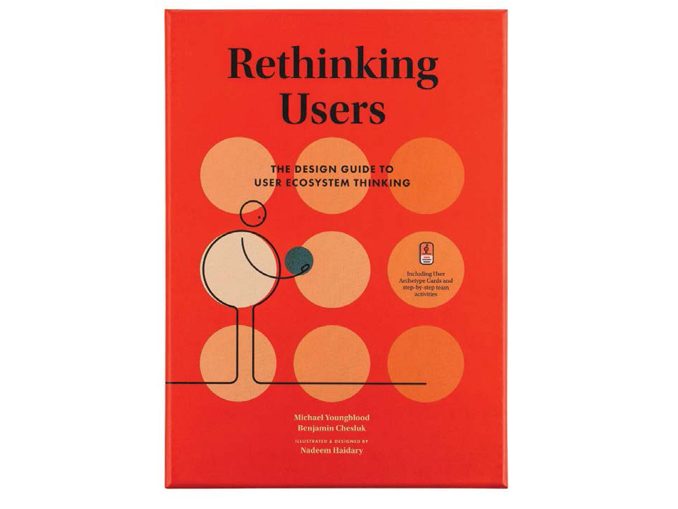Reviewed by Paula Rosecky, Facilitator & Coach, Paula Rosecky & Company, Seattle, Washington, paula@paularosecky.com
My initial hesitation to review Rethinking Users was tied to the authors’ use of the term “user,” which ran counter to my 15-plus years of market and UX research and facilitation, where my preference is to think of research participants as humans. That said, I’ve encountered a host of concepts that use different words to describe the same thing, so I stayed open to the point of view of these authors.
Rethinking Users has us, the direct users of this book, in mind. Its design is user-friendly with cards that add an element of experiential learning, which is a pleasant and practical benefit. I appreciated that the illustrated users in the book are gender and race agnostic.
While I won’t go into each of the 15 user profiles described in the book, know that they explain many user archetypes beyond the classic influencer, decision maker, and end user. They share more detail around user experiences so that we can make more strategic decisions about who we serve.
I wrote this review while flying from Seattle to San Diego to attend the QRCA 2022 conference, so I’ll use the example of the flight to highlight a few user archetypes discussed in this book.
“Coffee or tea? Coffee or tea?” asks the flight attendant.
As someone who engages directly and personally with this flight’s service, I am a direct user of this flight. I’m offered a beverage by the flight attendant, an intermediary user, someone who helps make the flight a good experience. The pilot, the person who controls the plane’s path while direct users sleep, read, and watch movies, is the governing user. My colleagues at the conference location are indirect users of this flight because they will experience me at the conference because of this flight.
Because all of these identified users experience this product and service, we are all part of the collective ecosystem that benefits (or not) from it. We each have differing roles and experiences of the product or service, but each of us play a conscious and unconscious role in the ecosystem. We each bring our ideas, cultures, beliefs, feelings, and actions to an experience.
This book expands our understanding of who the players are in the ecosystem and helps us ask more detailed questions such as:
- Who is in the immediate ecosystem?
- Who is in the broader ecosystem?
- Who are you unintentionally disregarding when designing a product or service?
At its simplest, Rethinking Users is a straightforward segmentation of users of a product or service experience. At its best, it offers a thorough experiential tool to help any leader think through the ecosystem of a product’s users’ touchpoints.
This book helps us to expand our view of user design in that it labels and details the many types of users. It helps us pay closer attention to what individuals do, and what groups or systems do, for the ecosystem to be more inclusive or purposefully exclusive.
As governing users of the facilitated spaces we create, we significantly affect the experience of our direct users of the space, like the pilot of this flight. If you are in the facilitation, UX, or research space, Rethinking Users will level up your understanding of human experience in a way that will make you a more impactful influencer in the design process.
While we are all users of products and services, let’s foremost remember that we are human. The authors purposefully created these archetypes to highlight our relationships to objects. But let’s not forget that having empathy and cultivating a deeper understanding of other people’s experiences is another meaningful way to rethink users.
In case you’re as curious as most researchers are, I like coffee and two creams on my early morning flights. Wishing you happy travels when that’s available to you and happy designing!




